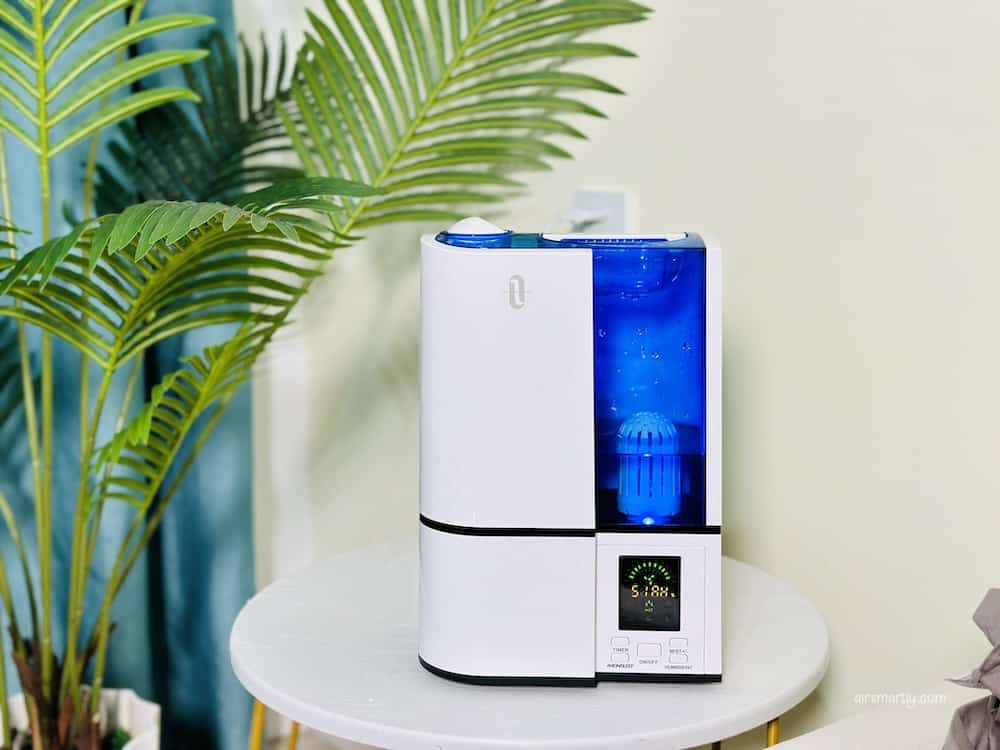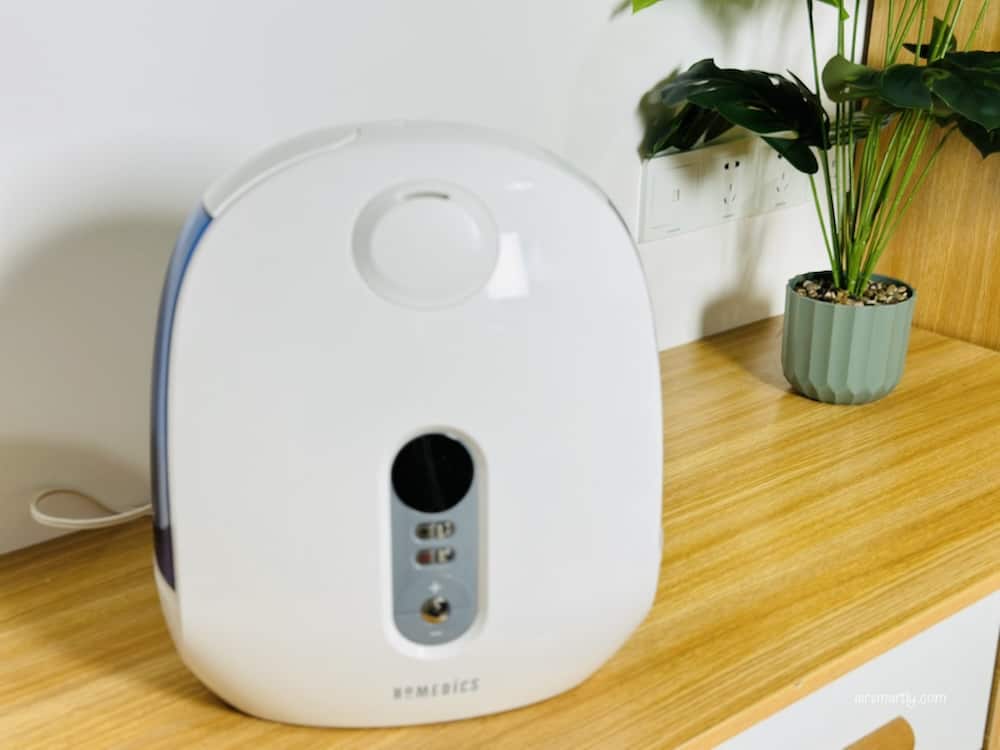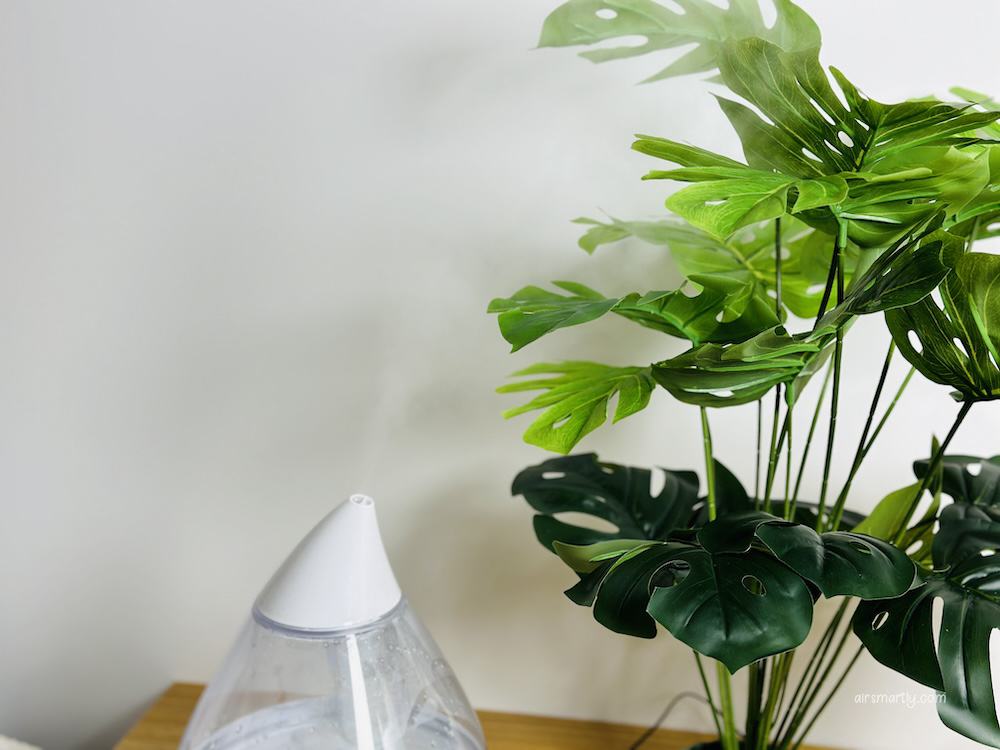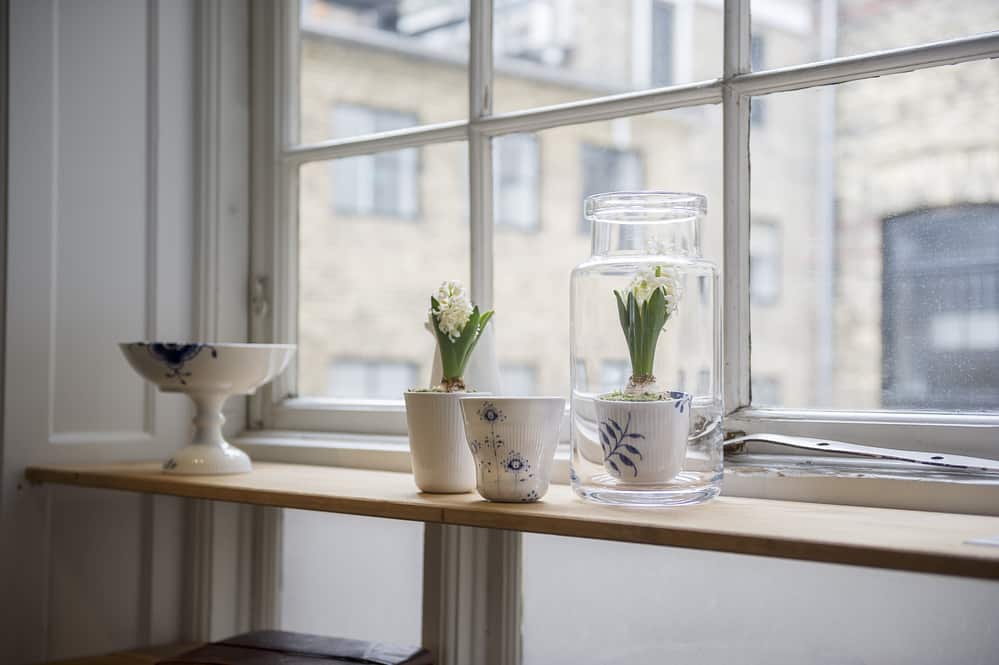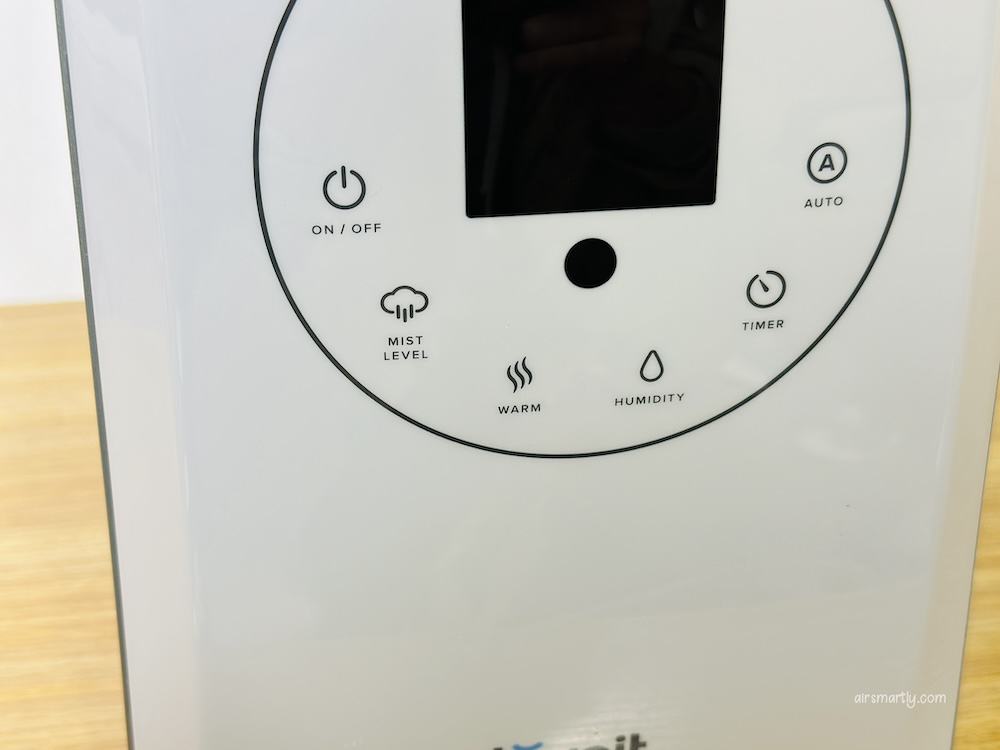Using a humidifier to increase the indoor humidity level for plants is a common practice these days. A humidifier can create a suitable environment for plants in different seasons, especially the cold and dry winter months.
As many species need to survive in a high humid space, they need a humidifier even more than we do.
When it comes to using a humidifier for plants, people have many questions to ask. After all, taking care of these little ones can be daunting. Among all these questions, where to place a humidifier for plants is popular.
Simply put, you should put your humidifier 3 to 6 feet away from the plants and make sure it is high off the ground. In addition, you should avoid placing it near electronics or in the corner.
In the following sections, I will explain why you should use it in such ways and what you have to consider when deciding the humidifier placement for plants. Let’s dive in!
Proper humidifier placement for plants
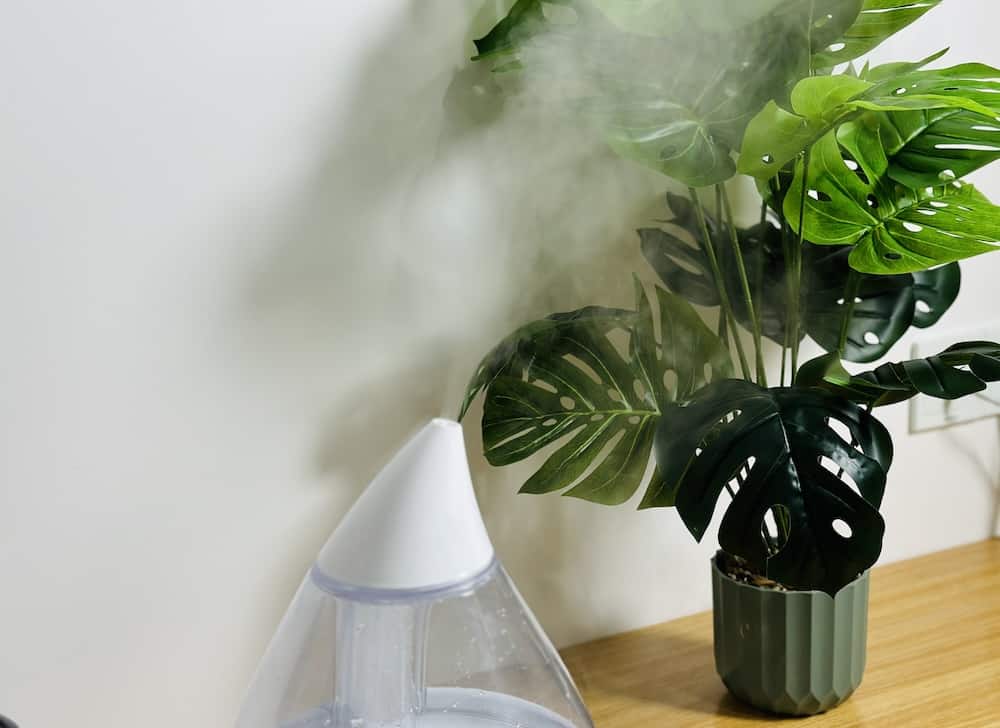
Despite thousands of indoor plants to choose from, there are some general rules of thumb you need to follow in terms of humidifier placements.
Put it 3 to 6 feet ( 1 to 2 meters) away from the plants
3 to 6 feet is a great distance between your plants and humidifier. Since a large proportion of plants ask for higher humidity levels than us. This distance ensures that your plants can get enough moisture.
However, you shouldn’t go overboard with the distance and place the humidifier too close to your green babies.
When plants are exposed to excess moisture constantly, the roots will rot, and the leaves will become the new residence of molds. In the end, the humidifier will become the killer rather than a lifesaver for your houseplants.
High off the ground
Placing a humidifier on the nightstand or ground is not a good idea. This will damage the floor, hurt your children and pets, or make it prone to break.
So you should place a humidifier high off the ground but still have at least 4 feet from your ceiling.
This will also boost airflow, which is critical for plants. A high humidity environment can promote the growth of many bacteria, fungi, and other microorganisms. If you let too much water sit on your houseplants, these plants get sick rapidly.
Placing it on a small table near the plants is suitable and even better if the table has some space for you to put other tools.
Don’t place it near electronics
When the humidifier makes the place over-humidified, it will damage electronics. Even though you are using a humidifier for plants, you shouldn’t ignore its effect on items around. The tiny parts in the gadgets will rust and malfunction gradually.
Aside from that, most plants raise humidity, which can worsen the situation.
So you should move your electronics away from your plants and humidifier.
Don’t place it on a wooden table
Wood is sensitive to humidity change. When you place a humidifier on a wood table, the vapor or mist will condense on the surface, resulting in swelling and warp. Meanwhile, mold spores will thrive on it, which can spread in the air and then land on the plants.
Some green babies are susceptible to fungus and molds, so you’d better keep them at bay.
Plants like sunshine but your humidifier doesn’t
Plants need light to survive, so it is common to see people place houseplants next to the window. However, sun exposure can harm your humidifier.
It will let the mold spores and bacteria in the water reservoir start to thrive. Algae will also show up. These contaminants will get into the air along with mist which can put your plants at risk.
Things to consider when placing a humidifier for plants
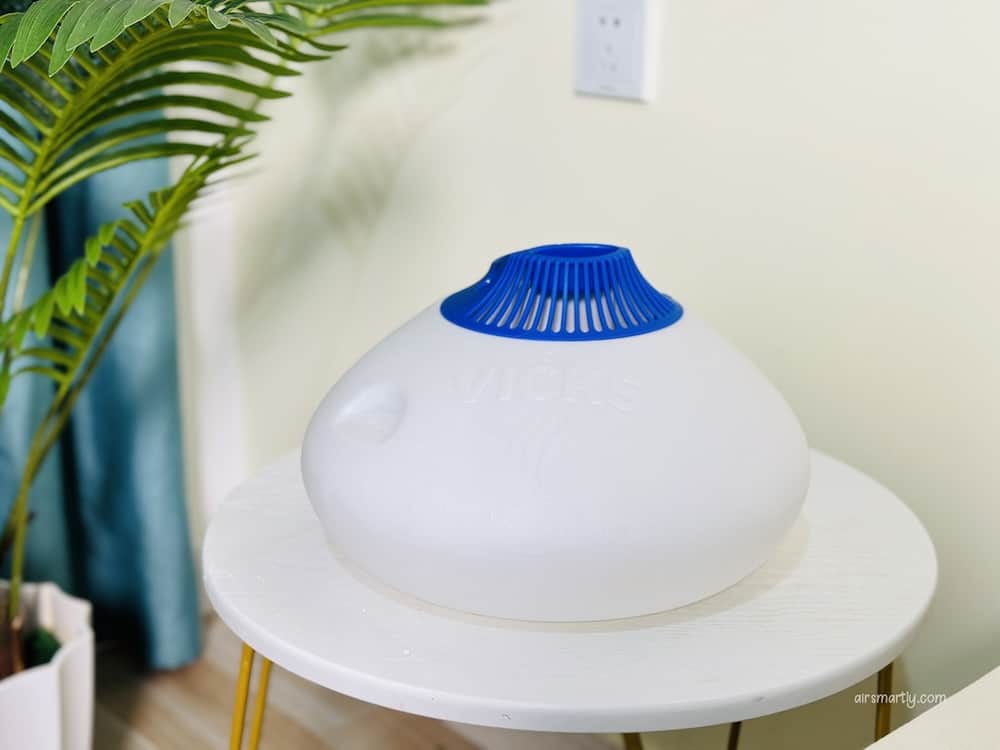
There isn’t a one-size-fits-all humidifier placement for plants. Many factors will affect it, and you should make your own decision.
Humidity requirements for your plants
You can’t grow all your indoor plants in the same way. Different species have different humidity requirements. Some can survive in the desert, and some will thrive in tropical rainforests.
For example, cacti and succulent plants can grow and thrive in a dry area with humidity as low as 10%, but carnivorous plants, philodendrons, monsteras, orchids, and fiddle leaf figs, anthuriums, air plants, and other tropical plants like high humidity conditions.
So you have to change settings according to the types of plants you have, and some may not need a humidifier at all.
Output rate of the humidifier
The higher the output rate, the less time it will take to reach a certain level of humidity.
As you know, humidifiers, especially ultrasonic humidifiers, will create a concentrated area that has pretty high humidity around the machine. If the output rate is high, it is likely to create a vicinity with extremely high humidity, like 80%, which is great for some specific species.
If the output rate is low, you may need to put it a bit closer to the plants so that they can get enough moisture sooner.
Run time of the humidifier
In most cases, it is advisable to run a humidifier every day for plants and for 3 to 5 hours each day.
Most units can run for 6 to 36 hours. So the running time shouldn’t be a big issue. But suppose you have a tiny portable humidifier or intend to use a diffuser instead of a humidifier. In that case, you should decide if the running time is sufficient for your plants.
Warm mist humidifier vs. cool mist humidifier
It doesn’t really matter whether your humidifier expels warm mist or cool mist in terms of using it for plants. The temperature change is not noticeable.
However, you can place it a bit away from the plants when using a warm mist model in case the hot vapor hasn’t enough time to cool down.
Conclusion
Taking care of houseplants can be sweet and exhausted for many of us. To maintain proper humidity for them, you need to use a humidifier.
Placing a humidifier in the right place is essential for the health of your plants. The wrong placement can make the plants remain dehydrated or become the peri dish for bacteria and mold growth.
Therefore, 3 to 6 feet is a proper distance for a humidifier to provide sufficient but not excess moisture for your green babies. On top of it, you should also make sure it is off the ground and away from electronics and wood furniture.
However, it is crucial to understand the humidity requirement of your plants before running a humidifier. You should also adjust the placement according to the specs of the device.
Using a humidifier is a more effective way to improve humidity conditions for plants than using a pebble tray. I am sure your green babies will be happy to stay in the vicinity of a humidifier.

